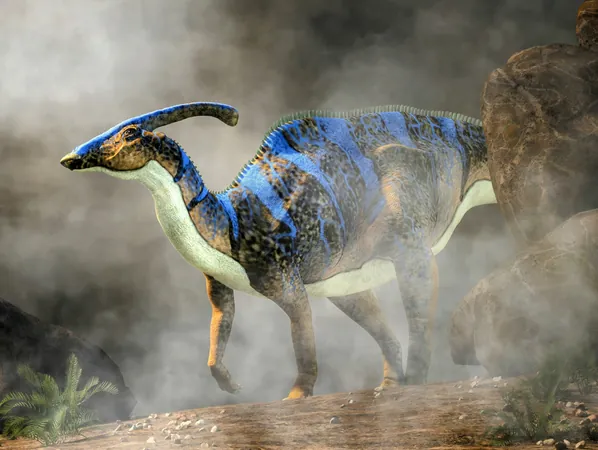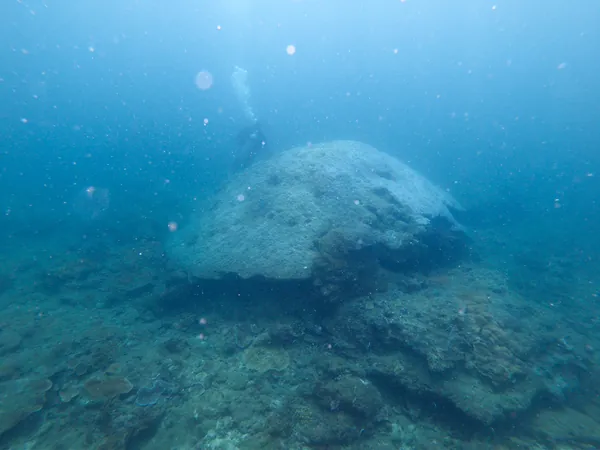
Unlocking Dinosaur Secrets: How Ancient Fossils Could Transform Cancer Research
2025-06-03
Author: John Tan
The Fascination with Dinosaurs and Their Hidden Secrets
Dinosaurs have always captivated our imagination, with their skeletons telling tales of a long-gone era. But it’s not just their bones that hold secrets—ancient tissues may reveal groundbreaking insights into diseases like cancer that continue to challenge modern medicine.
Ancient Fossils: A Window into Prehistoric Diseases
A groundbreaking study led by Professor Justin Stebbing from Anglia Ruskin University has unveiled how fossils can spark a revolution in cancer research. The researchers investigated a rare fossil of the herbivorous dinosaur, Telmatosaurus transsylvanicus, which once roamed the late Cretaceous period in Romania.
The team discovered possible indications of ameloblastoma, a type of tumor, in the dinosaur's jawbone, raising intriguing questions about how ancient species confronted diseases we still battle today.
Dinosaur Dilemmas: Cancer Resistance and Evolution
Through the lens of life-history theory, scientists explore how organisms like dinosaurs balanced survival, growth, and reproduction. For colossal creatures, the hefty price of maintaining defenses against cancer might have significantly influenced their development and reproductive strategies.
Understanding these evolutionary trade-offs helps shift our perception of cancer—from a mere biological flaw to a condition intricately woven into the fabric of life over millions of years.
Peering into the Past: Ancient Proteins and Their Significance
With the rise of paleoproteomics, researchers are employing cutting-edge techniques, such as mass spectrometry and scanning electron microscopy, to analyze ancient proteins that survived the ravages of time.
As Professor Stebbing points out, unlike DNA, proteins—especially those in calcified tissues like bones—are more resilient. This stability makes them prime candidates for uncovering ancient diseases, including cancer.
A Surprising Discovery: Cancer Was Not Uncommon
Contrary to popular belief, cancer has appeared frequently in the fossil record. Discoveries of tumors in various dinosaur species suggest that these ancient giants may have developed complex biological defenses against cancer.
According to Stebbing, studying these long-lived entities provides vital insight into how different species battled cancer susceptibility over eons.
The Relevance of Dinosaurs in Contemporary Cancer Research
Investigating dinosaur fossils provides a unique opportunity to understand cancer in organisms that lived under vastly different environmental conditions. This research could explain why some species are more prone to cancer than others and may illuminate strategies for prevention and treatment in humans.
Unearthing Shared Pathways: Ancient and Modern Convergence
An intriguing aspect of this research is the shared pathways that might govern cancer across both extinct dinosaurs and living vertebrates. Examining the ameloblastoma in this Romanian dinosaur could reveal whether certain molecular markers, like BRAF V600E, have remained consistent throughout history.
The Imperative of Fossil Preservation
The survival of soft tissues hinges on meticulous fossil handling and storage conditions. Improper exposure to air or moisture can obliterate crucial biological information.
Researchers urge better coordination across institutions to ensure fossils are stored under optimal conditions, enhancing the likelihood of future discoveries.
A Pathway to Future Breakthroughs in Cancer Research
As Professor Stebbing highlights, this pioneering research invites a wave of exploration that could illuminate novel cancer therapies. Coordinated conservation efforts combined with advanced laboratory techniques may someday reveal the profound connections between ancient diseases and modern health.
By safeguarding soft tissues alongside fossilized bones, we may unlock the mysteries of disease emergence and evolution, ultimately propelling cancer research into uncharted territories.
This groundbreaking study is now available in the esteemed journal Biology.

 Brasil (PT)
Brasil (PT)
 Canada (EN)
Canada (EN)
 Chile (ES)
Chile (ES)
 Česko (CS)
Česko (CS)
 대한민국 (KO)
대한민국 (KO)
 España (ES)
España (ES)
 France (FR)
France (FR)
 Hong Kong (EN)
Hong Kong (EN)
 Italia (IT)
Italia (IT)
 日本 (JA)
日本 (JA)
 Magyarország (HU)
Magyarország (HU)
 Norge (NO)
Norge (NO)
 Polska (PL)
Polska (PL)
 Schweiz (DE)
Schweiz (DE)
 Singapore (EN)
Singapore (EN)
 Sverige (SV)
Sverige (SV)
 Suomi (FI)
Suomi (FI)
 Türkiye (TR)
Türkiye (TR)
 الإمارات العربية المتحدة (AR)
الإمارات العربية المتحدة (AR)